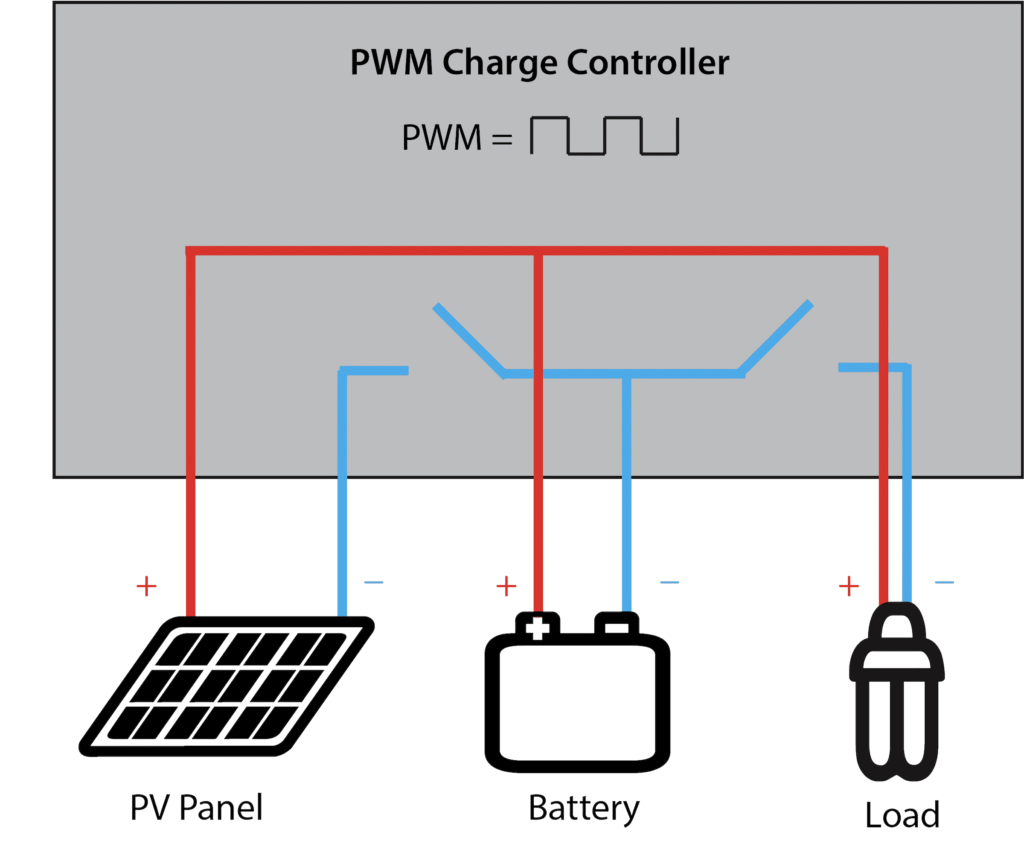A charge controller, also known as a solar charge controller or solar regulator, is a crucial component in a solar power system, particularly in off-grid and grid-tied systems with battery storage. Its primary function is to regulate and manage the flow of electricity between the solar panels, batteries, and loads (appliances or devices) to ensure the efficient and safe charging and discharging of the batteries. Here’s a breakdown of what a charge controller does in a solar system:
- Battery Protection: Charge controllers protect the batteries from overcharging. Solar panels can produce more power than the batteries can safely store, especially on sunny days. Overcharging can lead to reduced battery life, electrolyte loss, and even battery damage or failure. The charge controller prevents this by disconnecting the solar panels from the batteries when they are fully charged.
- Preventing Deep Discharge: Charge controllers also prevent deep discharge of batteries. When the battery voltage drops below a certain level, it can be damaged, and its lifespan can be significantly reduced. The charge controller disconnects the loads from the batteries to prevent over-discharging, ensuring that there is always a minimum charge left in the batteries.
- Optimizing Battery Charging: Charge controllers use various algorithms to maximize the charging efficiency of the batteries. They adjust the charging voltage and current based on the state of charge (SOC) and temperature of the batteries. This helps in maintaining the batteries at their optimal voltage levels for longer life.
- Load Control: Some charge controllers include load control features, allowing you to connect your electrical loads (appliances, lights, etc.) directly to the controller. This enables you to power your loads directly from the batteries and ensures that they are disconnected when the battery voltage is too low to prevent over-discharge.
- Monitoring and Data Display: Many modern charge controllers come with monitoring capabilities, such as digital displays or communication ports (e.g., RS-232, RS-485, or Bluetooth), to provide real-time data on system performance. Users can monitor battery voltage, charging status, and other relevant information.
- Temperature Compensation: Charge controllers can also adjust the charging parameters based on the temperature of the batteries. Extreme temperatures can affect battery performance, and the charge controller can compensate for these variations to ensure efficient charging.
- Protection against Reverse Current Flow: At night or during periods of low sunlight, there is a risk of reverse current flow from the batteries to the solar panels. Charge controllers prevent this reverse current flow, which can discharge the batteries.
- System Safety: Charge controllers include safety features like short-circuit protection and overcurrent protection to safeguard the entire solar power system.
In summary, a charge controller plays a critical role in maintaining the health and performance of batteries in a solar power system by regulating the charging and discharging processes, optimizing battery charging, and protecting the batteries from overcharging and over-discharging. It also helps in ensuring the overall safety and efficiency of the solar system.


